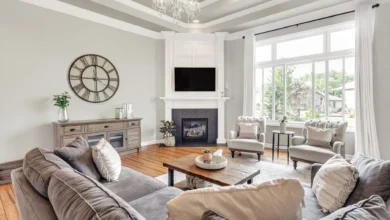
Turning Unused Space Into Something More
A loft can often feel like an afterthought—storage for boxes, seasonal items, or forgotten clutter. But with thoughtful design and planning, that space can evolve into one of the most functional parts of a home. The possibilities are endless, whether you’re looking to create a spare bedroom, home office, or a quiet reading nook. It’s not just about adding square footage—it’s about designing a space that adds meaning and utility. The key is to treat the project as a true extension of your home, not just a renovation. A loft conversion can feel like it was always meant to be there when done well. If you’re considering this kind of project, several points are worth exploring before you begin.
Starting with the Right Foundation
Before any walls are built or windows installed, it’s important to look at the home’s structure. Not all lofts are created equal—factors like roof height, existing support beams, and access points will shape what’s possible. By understanding these limitations early, you can avoid costly surprises later in the project. The condition of the roof and flooring also plays a critical role. It’s always wise to assess whether reinforcements will be needed to meet safety and building standards. Planning well from the start lays the groundwork for everything that follows. With a solid base, the design has room to thrive.
See also: 6 Home Improvements That Can Be Completed Within a Day
Defining the Function of the Space
A clear idea of how you want to use the loft helps guide layout and design decisions. A space designed for work will need different lighting and power options than a bedroom or lounge area. Think beyond the surface—what atmosphere do you want to create? Will it be bright and airy or warm and cozy? Identifying these characteristics means the build can support your goals without making compromises down the line. It also helps choose materials, layouts, and built-in features—the more focused the vision, the more cohesive the result.
Creating Light and Flow
Natural light can make a huge difference in how a converted loft feels. Roof windows, skylights, and dormers all provide different light and views. Where you place, these elements impact brightness and the room’s overall layout. Small lofts can feel spacious with the right light sources and open pathways. Airflow is equally important—ensuring adequate ventilation will keep the space comfortable year-round. Light and air transform the room from an attic into a living space. It’s a detail that elevates both comfort and design.
Matching the Style of the Home
While the loft should be unique, it must complement the rest of the house. This means considering flooring materials, paint finishes, and trim styles that blend with what already exists. Continuity between floors helps the conversion feel like a natural extension rather than a bolt-on project. This is especially important if you plan to sell in the future—buyers will notice if the space feels disjointed. Subtle design choices go a long way in maintaining flow from one area to the next. The best conversions are those that quietly enhance the whole home’s aesthetic.
Coordinating All the Moving Parts
Multiple professionals often bring a loft conversion to life—builders, surveyors, local authorities, and sometimes even engineers. It helps to have someone who can combine all these elements into one cohesive plan. Working with an experienced Architect for loft conversion ensures each aspect of the project aligns—from planning permissions to creative design.
A loft is no longer wasted space when all the parts come together. It becomes a meaningful, well-integrated home part that serves a real purpose. With smart choices and trusted guidance, the transformation can feel effortless.






